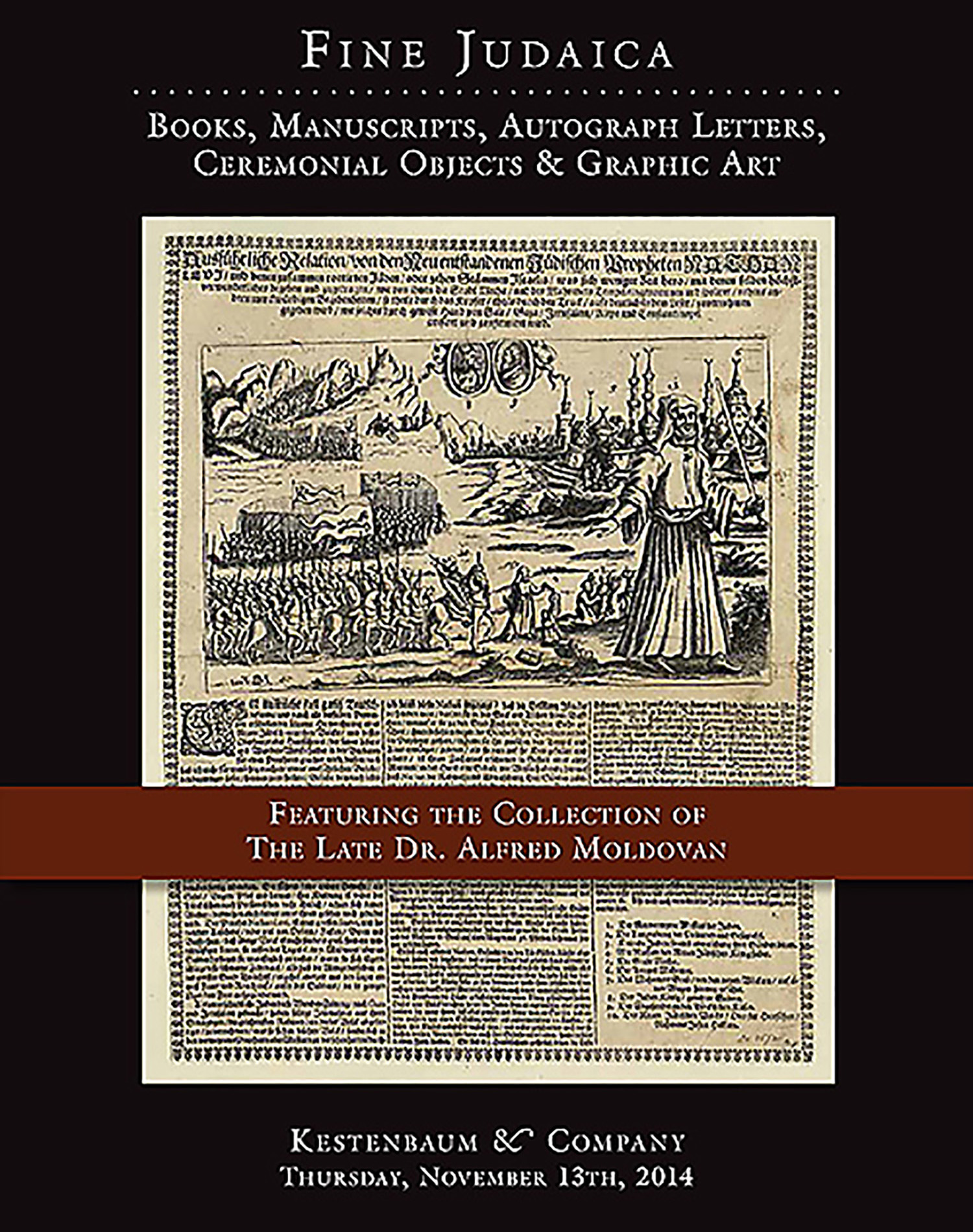Intense Prayer.

AUCTION 63 |
Thursday, November 13th,
2014 at 1:00
Fine Judaica: Books, Manuscripts, Autograph Letters, Graphic and Ceremonial Art
Lot 347
LIEBERMAN, CHENOCH HENDEL.
Intense Prayer.
“America,” 1962:
Est: $50,000 - $60,000
<<A masterful painting by a Lubavitcher artist, whose work most infrequently appears at public auction.>>
Chenoch Lieberman (1900-76) was a Chassidic artist whose work in later years has become enormously popular, especially throughout the world of Lubavitch. Born in Polotsk, Russia, into the Futerfass family, long-standing Lubavitcher Chassidim going back generations, Lieberman was a student at the Lubavitch Yeshiva in White Russia. As with so many Jewish families of that time and place, harsh circumstances forced the family to move and in 1916, they settled in Moscow. There, Lieberman’s impulses led him to form an artistic relationship with the Russian sculptor Innocento Zhukov who subsequently arranged entrance for the Chassidic artist to study in the Moscow Academy of Arts. Lieberman’s studies culminated in a year-long painting expedition to Birobidzhan, in the Soviet Far East, where he captured a range of subjects from Chassidim learning Torah to Siberian laborers. Returning to Moscow, Lieberman was employed by the government as a commercial artist until the outbreak of war, whereupon he was conscripted to join the Red Army. After years away fighting, Lieberman returned home in 1945 to learn of the murder of his wife and two daughters by the Nazis. Due to rampant Soviet oppression against the practice of Judaism, Lieberman joined others from the Lubavitch community in finding refuge in Samarkand, Uzbekistan, before ultimately fleeing the USSR posing as a displaced Pole. Afraid that the KGB would track him down, he changed his name from Futerfass to the more Polish-sounding Lieberman. After an extended journey (one in which his brother, the famed Chossid Reb Mendel Futerfass was arrested and subsequently imprisoned in Siberia), Lieberman finally found a modicum of safety in Paris. His life shattered, he corresponded from there to the sixth Lubavitcher Rebbe, Yoseph Yitzchok Schneerson in New York, seeking counsel about the one thing that still had personal meaning, reconciling his art with his religion.
Over a period of time, the conflict between Lieberman’s artistic calling and his devout Chassidic way of life became resolved and finding renewed spiritual resources he returned to painting, consumed with a regained vision. Paris was the ideal city to nourish his artistic inspiration, and Lieberman’s art flourished. Yet the burden of history and personal tragedies continued to weigh heavily on Lieberman and following the accession of R. Menachem Mendel Schneerson to the leadership of Lubavitch in 1950, Lieberman felt drawn to him and consequently left Europe and moved to the United States.
The new Rebbe, son-in-law of Yoseph Yitzchok Schneerson, also urged Lieberman not to abandon his talent, but to use it in the service of God and humanity. Often suffering from severe depression, Lieberman derived great comfort from the religious understanding that the Rebbe provided. Now living in physical proximity to the headquarters of Lubavitch, he flourished again. He was an artist occupying an honored position behind the Rebbe at prayers, celebrations and lectures and became an important figure in the life of Lubavitch Brooklyn.
In the present painting one cannot miss the classical art references to Cubist and Expressionist Art in Lieberman’s work - the bold use of color and the emotive brush work.
<<This painting has become an iconic image within the pantheon of classic Chabad-related historical images.>>
